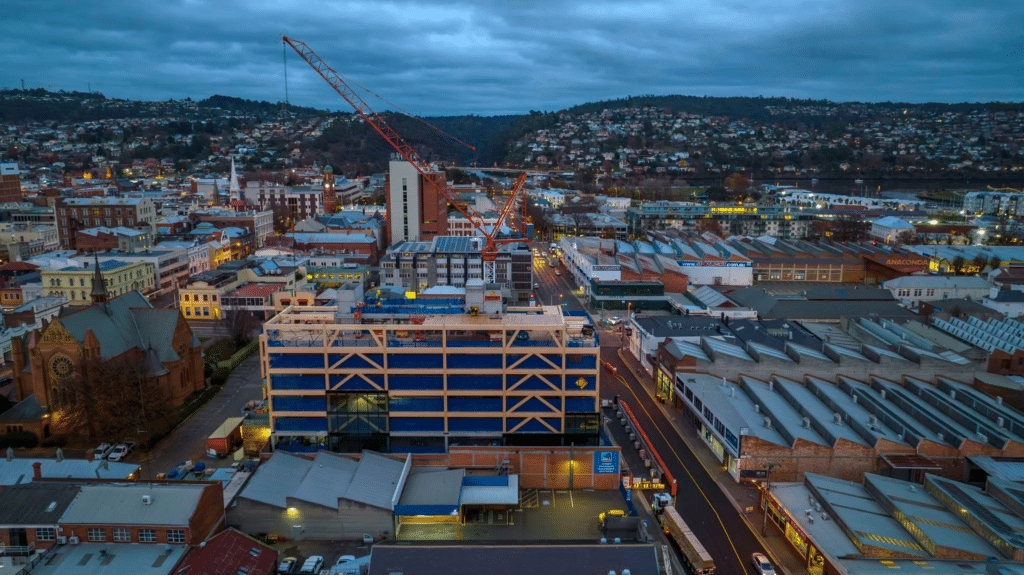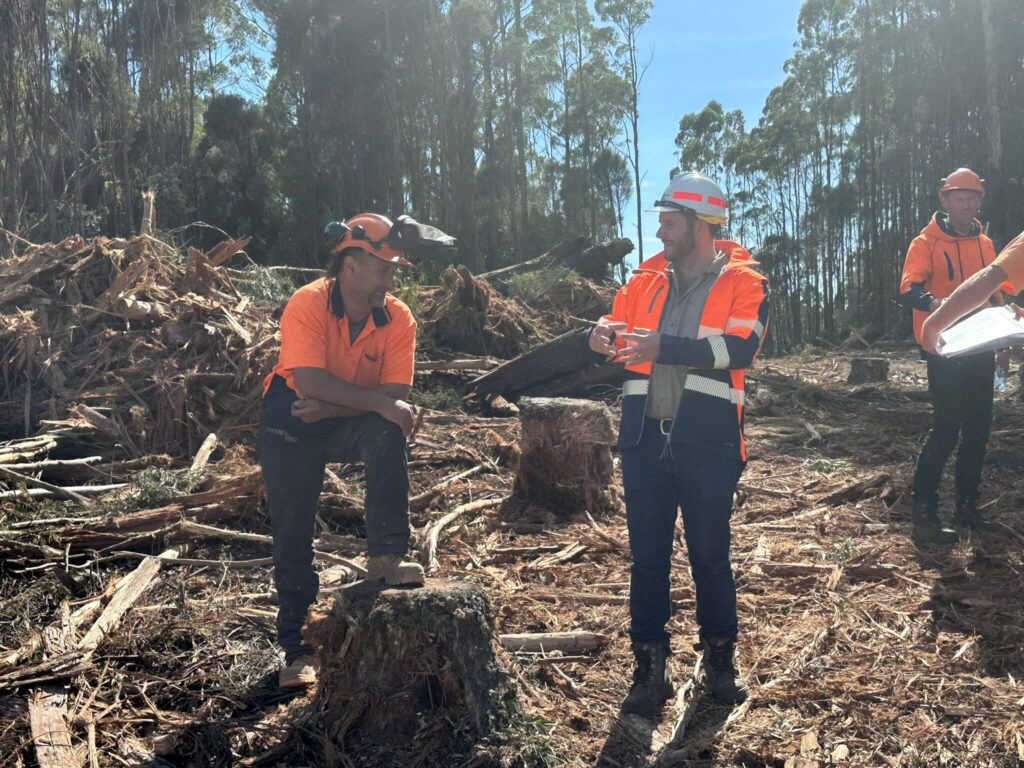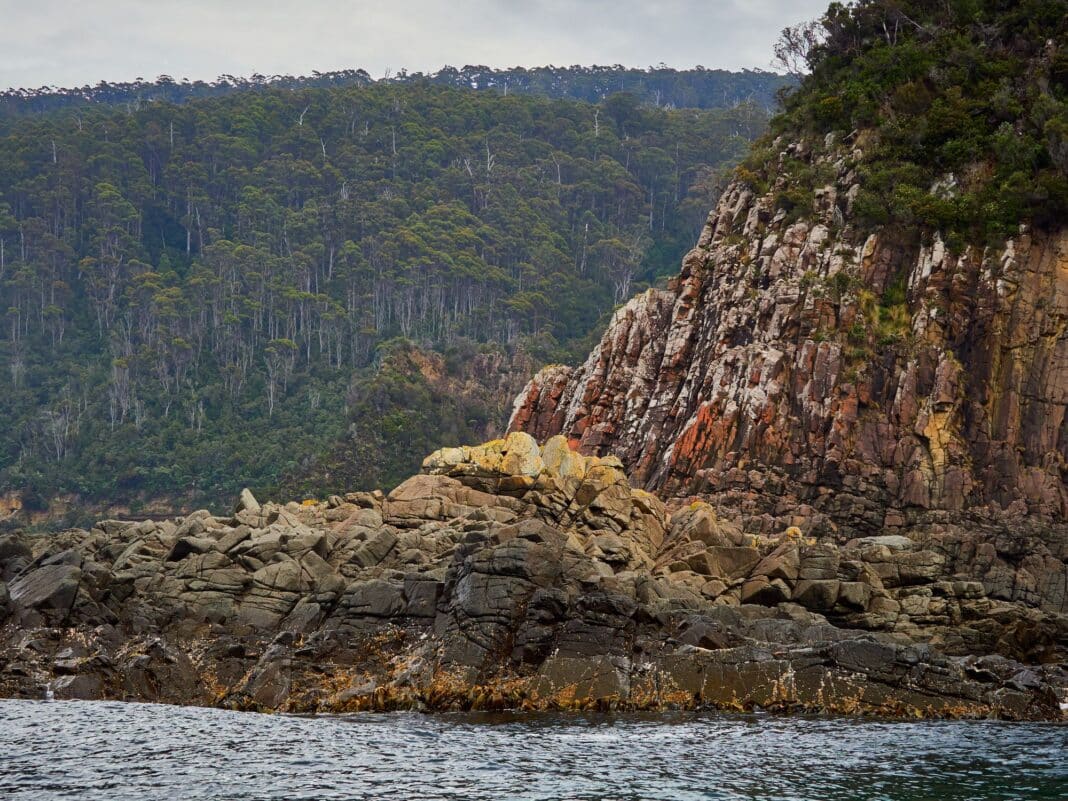The Tasmanian Government has vowed to boost timber supply by greenlighting another 40,000 hectares of native forests for logging protected under the 2012 forestry peace deal, which threatens to reignite the state’s “forest wars” and wedging Labor.
Announced by Tasmanian Premier Jeremy Rockliff this morning, the incumbent Liberal / Conservative government has promised to unlock a “Wood Bank” – “providing an up to 10 per cent boost in the annual supply of high-quality sawlog to Tasmanian saw millers,” according to a statement attributed to the Premier.
Premier Rockliff is doubling down on the native forestry in the lead-up to the March 23 poll, confirming that the Liberals are the “strongest supporters of Tasmania’s high-value native forestry industry” and were “backing in Tasmanian sawmillers, contractors, and local jobs”.

It comes after a report published in November last year put pressure on the Tasmanian State Government to increase sawlog production by 650,000 cubic metres over the next 15 years. The report “Building the Case for Supporting Intervention to Increase Sawlog Production from Australia’s Forests” called for intervention by the Tasmanian State Government to increase log supply.
Premier Rockliff – now in full election mode, said that “under the devastating Labor-Greens Tasmanian Forestry Agreement signed in 2011, the area of production forest land in Tasmania halved,” gutting local saw millers.
The bold decision will boost supply for industry and allow Tasmania to capitalise on the phase-out of native forest logging by Labor governments in Victoria and WA – who is so far the only head of government to openly criticise both state Labor Governments for the “ill-conceived” decision to close the native forest industries.
“Following our election in 2014, we rescued 356,000 hectares of production native forest from being permanently locked up and set it aside in a “Wood Bank” – the Future Potential Production Forest – for a rainy day,” Premier Rockliff said before confirming “that the rainy day has now arrived.”
However, the decision to double down on native forestry will almost certainly spark campaigns against Tasmania’s timber industry and a level of protest not seen on the island for more than a decade while the disputed forests have been held in limbo.

Already powerful green and conservation groups have high-profile supporters, like Hollywood A-Lister Leonardo DiCaprio (a director of WWF USA and Green Cross International), who has called Rockcliff governments to end forest harvesting in areas near Swift Parrot nesting sites.
Mr DiCaprio shared with his 62 million Instagram followers that the Tasmanian Supreme Court granted an injunction on forest harvesting in the Huon Valley, in a decision described by Bob Brown as a “huge win” for the Bob Brown Foundation.
Tasmania’s State Labor opposition, which trails the incumbent government in the latest opinion poll, is divided on the issue and must decide whether to back the Liberals’ policy or risk losing more blue-collar votes.
The 40,000 hectares are part of a highly contested 356,000 hectares area protected by the 2012 industry-conservation group “peace deal” or Tasmanian Forest Agreement – which the previous Labor Government enshrined into legislation.
Still, it was effectively frozen in 2014 by the incoming state Liberal government, which designated the area “Future Potential Production Forest” or FPPF instead.
On Wednesday, Wood Central revealed that the industry was working with traditional owners on a bold land reform that would see up to 85% of lands, potentially slated for commercial harvesting, returned to indigenous communities.
Arising from the Mona Forest Economics Congress last November and further discussed last month, it remains highly contentious, with conservationists opposed and accusing the industry of “blackwashing” and seeking to “wedge” them against the Indigenous community.
However, Premier Rockliff will rule out this proposal, as exclusively reported by Mattew Denham in the Australian, “because it takes the sting out of expanding logging areas.”
“Timber communities across the state were decimated, and two out of every three jobs in the sector were sacrificed by Labor seeking to appease the Greens,” the Premier told the Australian.

The Tasmanian government pledged to move within 100 days of re-election to allow logging inside the FPPF, with the Liberal Resources Minister Felix Ellis, a member of the conservative faction and a long-time supporter of native forestry, said the forest industry supported more than 5700 jobs, while native timber provided high-quality floorboards and bespoke furniture.
“It’s important to remember more than 50 per cent, or 3.43 million hectares, of Tasmania is in formal reserves, making Tasmania one of the most protected places on earth,” Minister Ellis said. “This includes around … 85 per cent of its old-growth forests.”
However, this figure relates to what remained of Tasmania’s old growth in 1996; according to the Australian, “about 30 per cent of pre-European settlement forest cover remains and is protected,” whilst conservationists argue key forest species attractive for logging are under-represented in reserves.
Minister Ellis said the 27 parcels of former peace deal forest reserves identified as suitable for logging were mostly “regrowth forest”. However, conservationists say the official definition of “regrowth” includes forests subject to selective tree removal in the early 20th century.
Premier Rockliff’s electoral commitments include:
- Make available up to 40,000 hectares of the Future Potential Production Forest “Wood Bank”;
- Make available an additional wood basket of up to 158,000 cubic metres of high-quality sawlog to Tasmanian industry – that’s an up to 10 per cent increase annually and
- Make this new supply exclusively available to existing Tasmanian customers.







